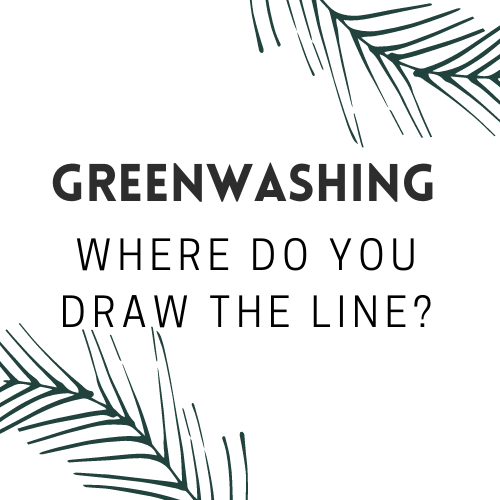
Greenwashing is an attempt to make people believe that your company is doing more to protect the environment than it really is:
Cambridge Dictionary
Does that description seem vague? That’s because it is vague. You may see some people calling out something as greenwashing and wonder what they mean?
Never heard of greenwashing before? An extremely obvious example would be naming a product to make it sound eco-friendly, when in fact it is a toxic chemical that is harmful to the environment. This then misleads the customer into thinking they are making an eco-friendly choice when it is quite the opposite.
Greenwashing to me is not a yes or no answer, but a sliding scale. We have to make the best decision we can as a consumer based on what we know and how it compares to other goods on the market.
I would like to give a few examples of different types of greenwashing to help explain why I don’t think it is all the same. This graphic shows the companies’ level of commitment to being more eco-conscious. We just have to decide at what level are we okay with it, if at all?

Well great, are there any situations that have no greenwashing?
We need to be looking for the companies that are being environmentally responsible as they can be with the resources they have. From there, we can compare them to other companies and make the best decision based on our own resources.
Where do you draw the line?
Common Components of Greenwashing
- Misleading packaging, making you think it is environmentally friendly.
- Environmental buzzwords on their packaging but little to back it up on their website for transparency.
Be Aware of:
Unregulated buzzwords: biodegradeable, all natural, recycleable, sustainable, environmentally friendy, green certified, cruelty free. These words are all unregulated. There is no one approving they use these labels, so to the company, it can mean whatever they want it to mean. If they make these claims, you may need to look into it further to know what they actually mean.
Credentials: As I mentioned in Vote with your Dollar: An Environmental Perspective, I touch on some of the various certifications you could look for that help toward deciding if the company is credible. Some that I keep my eyes out for a Fairtrade Certified, B Corp, or 1% for the Planet.
Website transparency: If their website is not showing how they are specifically doing what they claim, they may have no way of tracking their claims or they could potentially have something to hide.
Conclusion
Marketing can be incredibly powerful. It can help rally people towards a truly great service or product or it can lead you astray with false claims or misunderstandings.
Being aware of companies not backing up their claims is important. Holding companies responsible for any false advertising is key. This can be done by voicing your opinion or by simply not purchasing from them.
I have fallen for what I consider to be greenwashing multiple times. I learn from it and move on. One of the most helpful tips I have learned is that the most sustainable product you can buy is the one you already own. So do not feel like you need to buy something because it is most sustainable than what you already have. Use up what you have now and then go from there.





